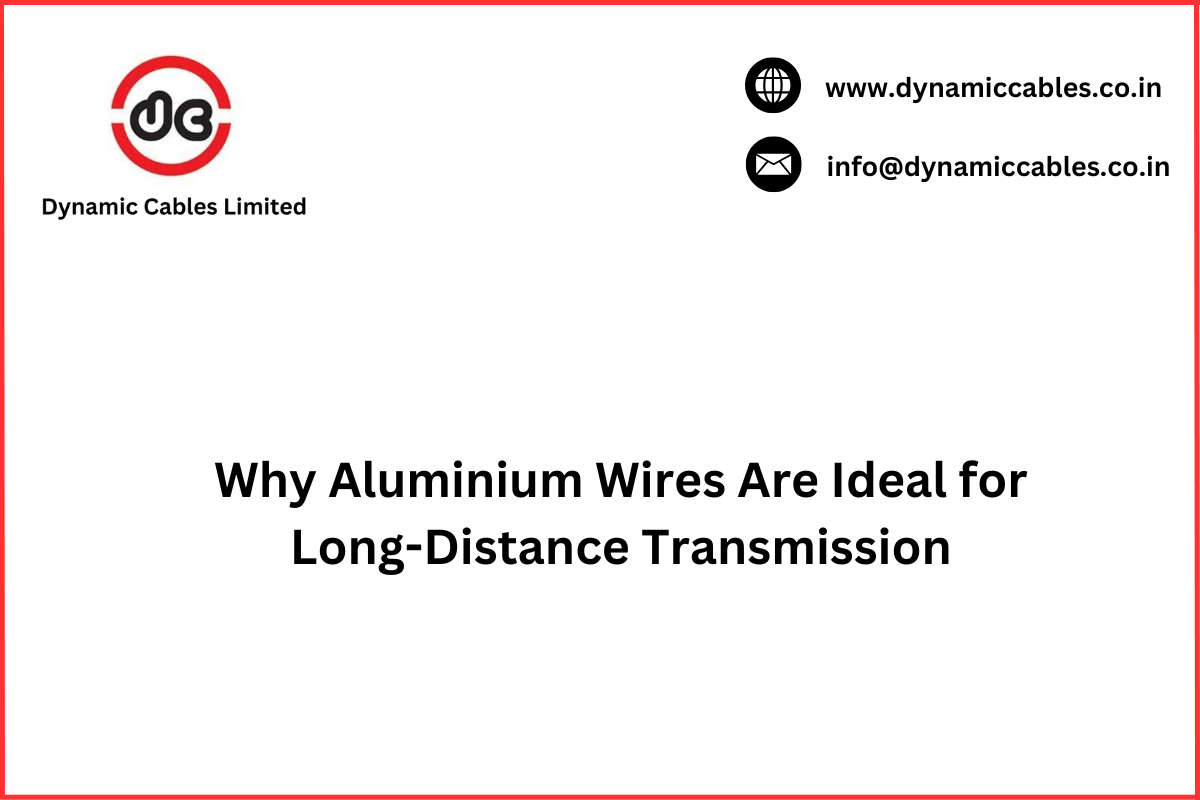- An ISO 9001:2015, 14001:2015 & 45001:2018 Company

Why are Aluminium Wires Preferred for Long-distance Transmission?
In electrical transmission, efficiency and cost-effectiveness are important. As energy demand continues to rise globally, power companies and engineers aim for solutions that ensure seamless electricity flow over long distances. One of the most common choices for power transmission lines is aluminium wires, and this preference has a range of technical and economic reasons. In this article, we will explore why aluminium wires are preferred for long-distance transmission.
Reasons to use Aluminium Wires for Long-Distance Transmission
- Lightweight in Nature: Aluminium wires are lightweight nature They are lighter than copper, which makes it much easier to handle, transport, and install, especially for long-distance transmission lines that span hundreds or even thousands of kilometers.
- Cost-Effectiveness: Aluminium is much more affordable than copper, making it a cost-effective solution for power companies. While aluminium may not have the same conductivity as copper.
- Sufficient Conductivity: While copper is a better conductor of electricity, aluminium provides sufficient conductivity for long-distance power transmission. To achieve the same level of conductivity, aluminium wires are often made larger in diameter than copper wires, but even then, they remain lighter and more cost-effective. The balance between aluminium’s lower conductivity and its other advantages, such as weight and cost, makes it the ideal choice for high-voltage transmission.
- Corrosion Resistance: Another significant advantage of aluminium is its natural resistance to corrosion. When exposed to environmental elements, aluminium forms a thin oxide layer that protects it from further degradation. This property makes aluminium wires particularly suitable for outdoor applications where they may be subjected to harsh weather conditions or pollutants.
- High Strength-to-Weight Ratio: Despite being lightweight, aluminium has an impressive strength-to-weight ratio, especially when used in Aluminium Conductor Steel Reinforced (ACSR). In ACSR, aluminium wires are wrapped around a steel core, combining the strength of steel with the conductivity and lightness of aluminium. This allows the wires to withstand high tension over long distances and remain durable in extreme weather conditions.
- Flexibility: Aluminium wires are relatively flexible, making them easier to handle during installation. This flexibility is essential when navigating complex terrains or working around obstacles. Easy in installation can lead to faster project completion times, which is a critical factor in large-scale energy infrastructure projects.
- Environmental Considerations: From an environmental perspective, aluminium is a highly recyclable material. The ability to recycle old cables into new ones not only conserves resources but also minimises the environmental footprint associated with power transmission infrastructure projects. This sustainability aspect aligns well with modern energy policies aimed at reducing waste and promoting eco-friendly practices in the industry.
Let's Wrap-up
Aluminium wires are preferred for long-distance power transmission due to their combination of various features. While copper offers higher conductivity, aluminium's lighter weight and lower cost make it the better option for large-scale infrastructure projects, especially over vast distances. These qualities position aluminium as a key material in modern electrical transmission systems, helping power companies meet growing energy demands efficiently and economically.
 English
English


 C701, Tower-C, Noida One
C701, Tower-C, Noida One
